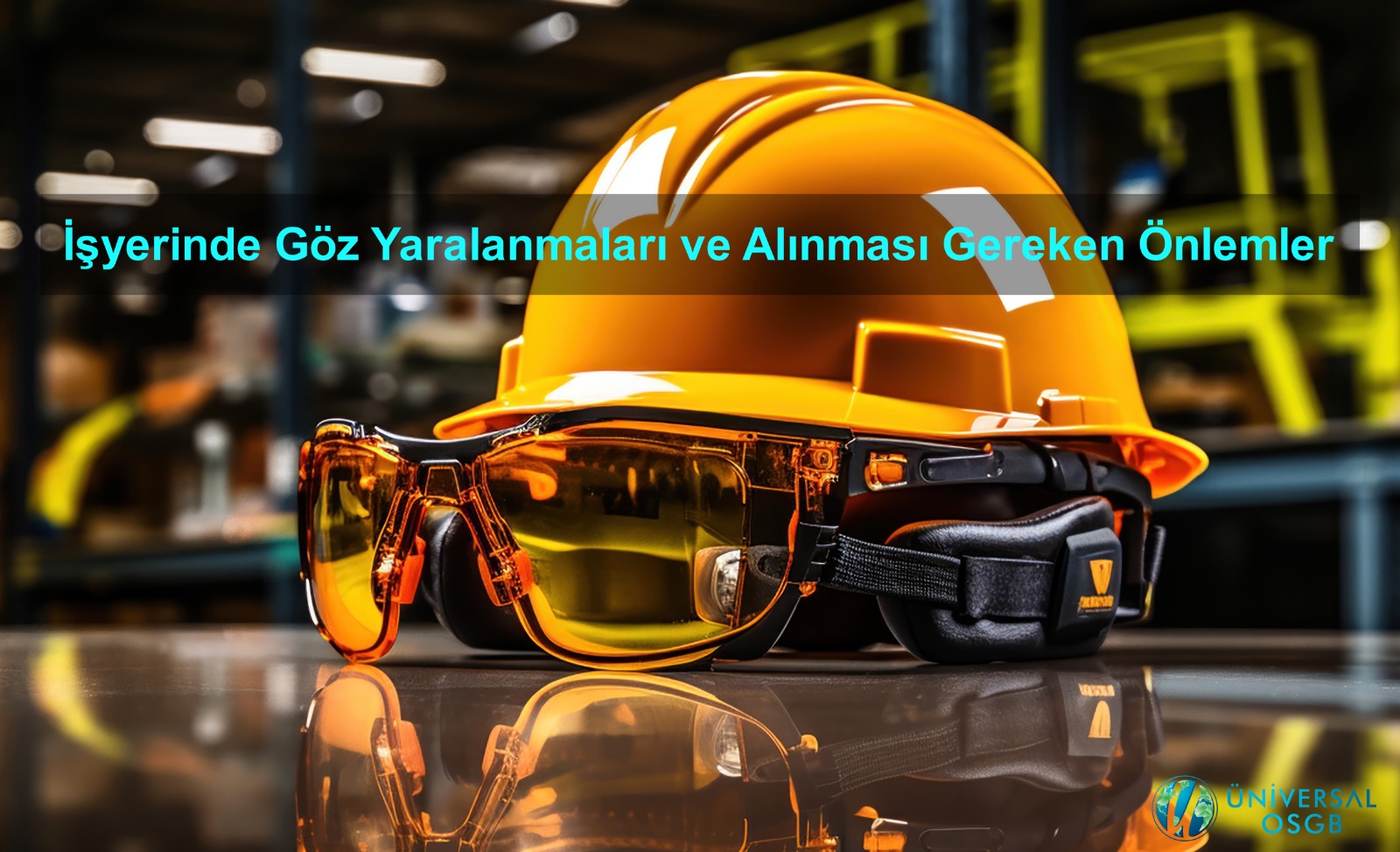
Eye Injuries at Work and Precautions to be Taken
The eye is a very sensitive organ to eye injuries, which is one of the most common accidents at work. Eye injuries at work can occur as a result of physical, chemical or biological factors and in some cases can lead to serious health problems. For this reason, taking effective measures to prevent eye injuries is of great importance for occupational safety. Below you can find detailed information about the causes of eye injuries and precautions to be taken.
Causes of Eye Injuries
The main factors that can cause eye injuries in the workplace are:
Physical Factors: Flying particles (metal or stone fragments, chips), movements of construction machinery and sharp objects can cause physical injuries to the eye.
Chemical Substances: Splashes or vapors of acids, bases, solvents and other chemicals in contact with the eyes can lead to burns.
Rays: UV rays, especially those exposed to high-temperature jobs such as welding, can cause severe burns to the eye and loss of vision in the long term.
Biological Hazards: In jobs involving biological risks, such as hospitals and laboratories, the splashing of infected bodily fluids or microbial agents into the eye can lead to eye infections.
Methods of Preventing Eye Injuries
Employers and employees should take certain precautions to prevent eye injuries at work. These measures protect the eye health of employees by ensuring occupational health and safety.
Use of Personal Protective Equipment
One of the most effective ways to prevent eye injuries at work is the use of personal protective equipment (PPE). Work-appropriate glasses, face protectors and welding masks protect employees' eyes from various risks. For those who work with chemical substances, protective glasses with closed sides should be preferred, glasses made of durable material for protection from physical impacts.
Regulation of Risky Work Areas
The regulation of the working area increases the safety of employees in risky areas. For example, using protective curtains or barriers in work that creates sawdust and dust reduces the risk of splashing. Measures should be taken to prevent spillage or splashing of chemicals in areas where hazardous chemicals are used, and safe work stations should be established.
Education and Awareness-Raising
Employees should be given regular training on eye injury prevention and first aid. These trainings ensure that employees recognize possible risks and use the correct protective equipment. It also gives awareness about how to behave in dangerous situations.
Marking and Warning Signs
The presence of warning signs requiring eye protection in risky areas allows employees to be careful. Signs indicating the need for eye protection should be placed in environments with chemical and biological risks.
First Aid and Emergency Plan
A first aid and emergency plan should be prepared against eye injuries that may occur at work. Eye showers are an important first aid equipment for jobs exposed to chemicals. The places of use of eye showers should be shown to employees and eye shower stations should be kept accessible at all times.
Additional Recommendations For the Protection of Eye Health
Periodic Health Screenings: December eye examinations should be performed at regular intervals to protect the eye health of employees at work. These scans enable the detection of early-stage eye problems and rapid intervention.
Lighting and Field of View Regulations: Ensuring appropriate lighting conditions in the workplace reduces eye fatigue and prevents accidents.
Regulation of Working Hours: Eye health can be protected by providing Dec rest periods, especially for those who work for a long time in front of the screen.
Compliance with occupational safety practices to prevent eye injuries, the creation of an effective safety culture in the workplace and the education of employees are of great importance. These measures ensure the protection of eye health, while at the same time minimizing work accidents. The fact that employers fulfill their responsibilities to protect employee health contributes to the creation of a safe environment at work.
Üniversal OSGB
Occupational Safety and Worker Health Center


